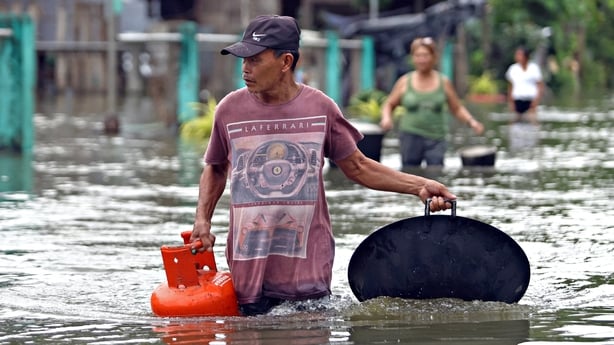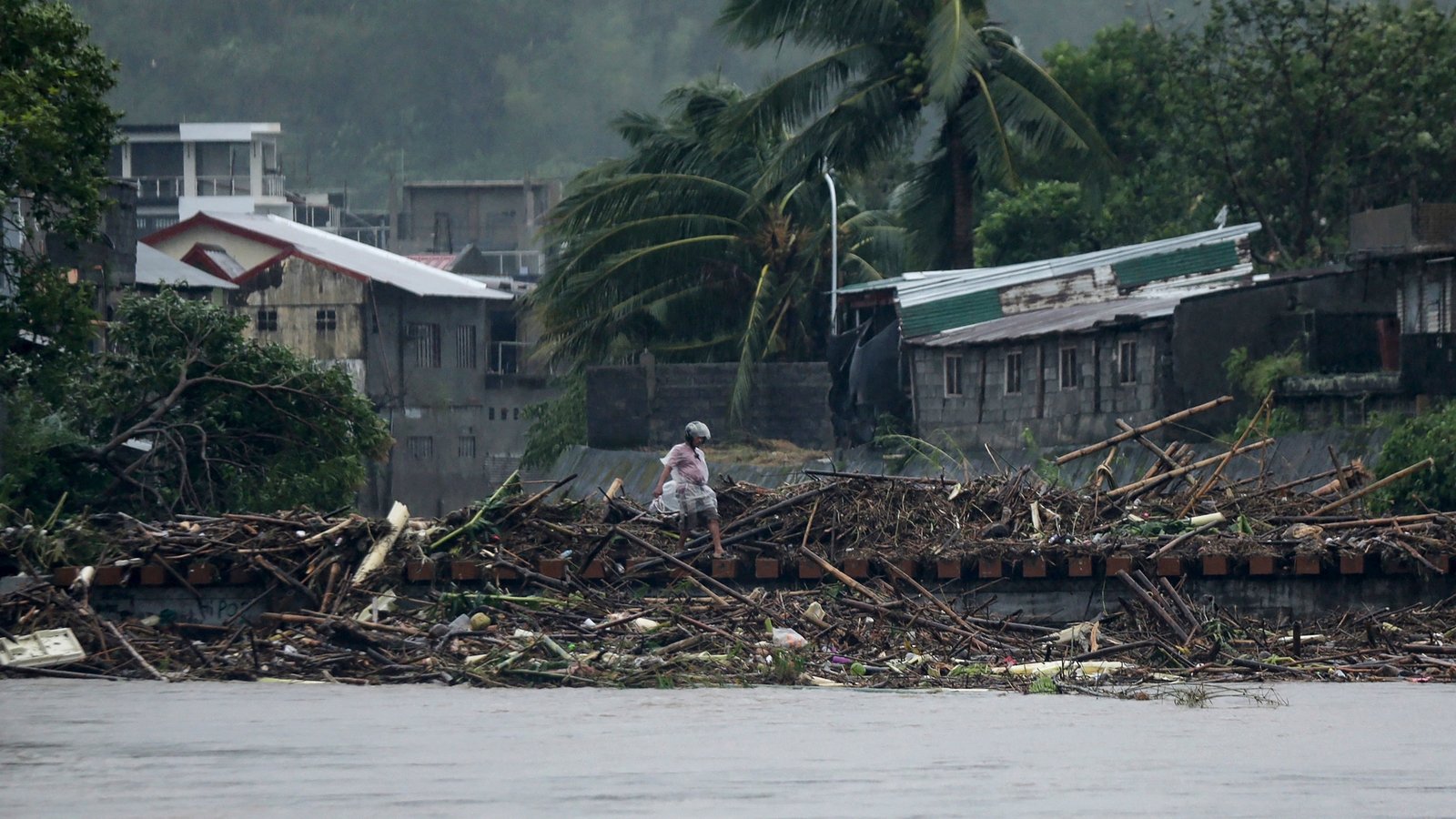Super Typhoon Fung-Wong has made landfall in the Philippines with two fatalities reported and 1 million people evacuated ahead of one of the nation’s most powerful storms this year.
The storm crossed over the north of the archipelago’s most populous island Luzon, weather bureau PAGASA said, with torrential rain, sustained winds of 185km/h and gusts of up to 230km/h.
It was the 21st storm this year to hit a nation only just recovering from Typhoon Kalmaegi, which left 224 dead in the Philippines and five in Vietnam.
“We heard on the news that the typhoon is very strong, so we evacuated early,” said Christopher Sanchez, 50, who camped with his family on a basketball court in Isabela province on Luzon.
Given previous flooding, the family moved possessions to their roof before leaving. “We’re scared. We’re here with our grandchildren and our kids,” he said in the sports arena dotted by tents, elderly people on plastic chairs and children roaming.
Watch: Waves crash over beachside structures as typhoon hits Philippines
Luzon and another island Eastern Visayas bore the brunt of the storm’s early onslaught, with one person drowned and another trapped under debris, authorities said.
The storm was expected to weaken as it moves inland.
Pope Leo offered prayers for the predominantly Catholic nation.
“I am close to the people of the Philippines affected by a violent typhoon. I pray for the deceased and their families, for the injured and the displaced,” he said on Sunday.

Rescuers evacuate people from their flooded homes on the southern island of Mindanao
In Luzon island’s Aurora province where the storm arrived, lights went out but phone lines were still working, civil defence official Cheng Quizon told DZBB radio.
Several airports, including Sangley near the capital Manila and Bicol to the south, closed.
Fung-Wong is expected to head north of the Philippines and reach coastal waters on Monday morning while remaining a typhoon, PAGASA said, before heading out to sea and weakening as it reaches west Taiwan on Thursday.
“As we speak, they are feeling the impact of the typhoon, especially in Catanduanes, because the storm’s eye is closest there,” civil defence deputy administrator Rafaelito Alejandro said at a press briefing, adding that 916,863 people had been evacuated nationwide.
“The waves started roaring around 7am. When the waves hit the seawall, it felt like the ground was shaking,” Edson Casarino, 33, a resident of Catanduanes’ Virac town said.
“Heavy rain is pouring now, and I can hear the wind whistling.”
Video showed a church in the town surrounded by floodwaters that reached halfway up its entrance.
Watch: Flash floods sweep through Philippines as super typhoon strengthens
‘Strapping down the roofs’
Yesterday, Catanduanes rushed to prepare for the onslaught, with residents tying down their houses with ropes and putting weights on their roofs.
“They decided to do our tradition of strapping down the roofs with big ropes and anchoring them on the ground, so they won’t be blown away by the wind,” provincial rescue official Roberto Monterola said.
In Sorsogon, a city in southern Luzon, some sought refuge in a church.

Fung-wong is expected to bring wind and heavy rain to broad swathes of the archipelago nation
“I’m here because the waves near my house are now huge. I live near the shore, and the winds there are now very strong,” Maxine Dugan said.
Only days earlier, Typhoon Kalmaegi sent floodwaters rushing through the towns and cities of Cebu and Negros islands, sweeping away cars, riverside shanties and massive shipping containers.
The typhoon, the deadliest of 2025 according to disaster database EM-DAT, killed at least 224 people and left 109 missing, according to government figures updated this morning.
Yesterday, rescue official Myrra Daven said the approaching super typhoon had forced the suspension of search and rescue activities in Cebu, home to the majority of Kalmaegi’s deaths.
“We cannot risk the safety of our rescuers. We don’t want them to be the next casualties,” she said.

